Why You Should Cover Your Patio Furniture: Protecting Your Investment from the Elements
Patio furniture is an integral part of an outdoor living space, providing comfort and aesthetic appeal. However, it is exposed to the elements, which can cause wear and tear over time.
To ensure that these pieces retain their functionality and appearance, it's vital to cover them.
Outdoor furniture covers serve as a shield against various weather conditions, from the harsh rays of the sun to the moisture of rain and snow.
By doing so, they significantly prolong the lifespan of the furniture.
Covering patio furniture is not just about protection; it's also a matter of maintaining the value of your investment.
Outdoor furnishings can be quite costly, and leaving them unprotected can lead to damages that are expensive to repair or require premature replacement.
Moisture can lead to rust on metal components and mould growth on cushions, while UV rays can fade and weaken fabrics and materials.
Using covers helps to prevent these issues, keeping furniture looking new and functional for a longer period.
Furthermore, the use of furniture covers simplifies maintenance.
Regular cleaning is necessary to keep outdoor furniture in top condition, but covers can reduce the frequency of deep cleans by keeping dirt, debris, and pollutants at bay.
This not only saves time but also reduces the wear that can result from repeated cleaning processes.
Importance of Protecting Your Patio Furniture
Protecting outdoor furniture is vital to ensure its longevity and maintain its appearance. Quality covers can shield the furniture from various elements, thus preserving your investment.
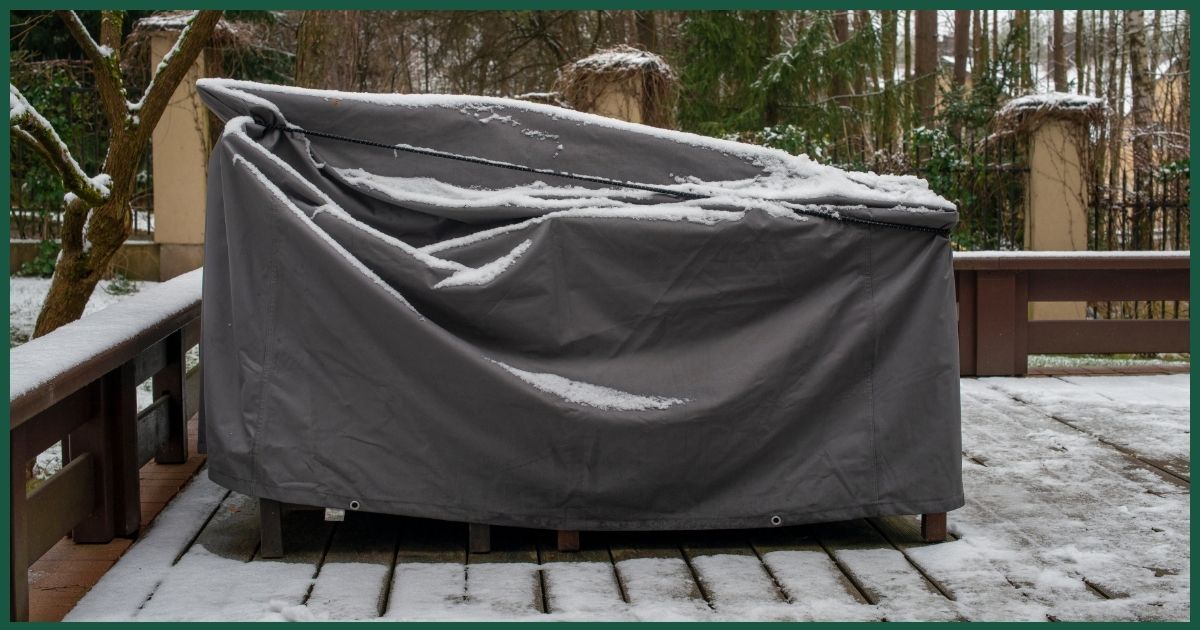
Benefits of Patio Furniture Covers
Patio furniture covers serve several important functions.
They protect furniture from weather damage, such as rain, wind, and UV rays, which can lead to fading and material degradation.
The use of these covers extends the life of outdoor furniture by safeguarding against harsh weather conditions.
Furthermore, covered furniture remains cleaner and requires less frequent maintenance, substantially prolonging its durability and longevity.
Common Threats to Outdoor Furniture
Outdoor furniture faces numerous risks that can compromise its condition.
Weatherproof covers are essential because they combat threats like rain, which can cause wood to swell, metal to rust, and fabrics to mould.
Sun damage from intense UV rays can lead to fading and deteriorating fabrics, while wind can scatter debris, leading to scratches or dents.
Even during milder seasons, furniture is at risk from dust and pollen. Without protection, these elements can significantly reduce the furniture's lifespan.
Enhancing Outdoor Lifestyle
Investing in good quality covers for patio furniture not only preserves the furniture itself but also enhances the outdoor lifestyle experience.
Furniture in prime condition contributes to the overall comfort and appeal of an outdoor space, making it more inviting and usable for extended periods.
By ensuring that furniture pieces are always ready for use and presentable, people can enjoy an improved quality of life in their outdoor living spaces.
Selection of Patio Furniture Covers
Selecting the right patio furniture covers is essential for protecting your investment while maintaining the aesthetics of your outdoor space.
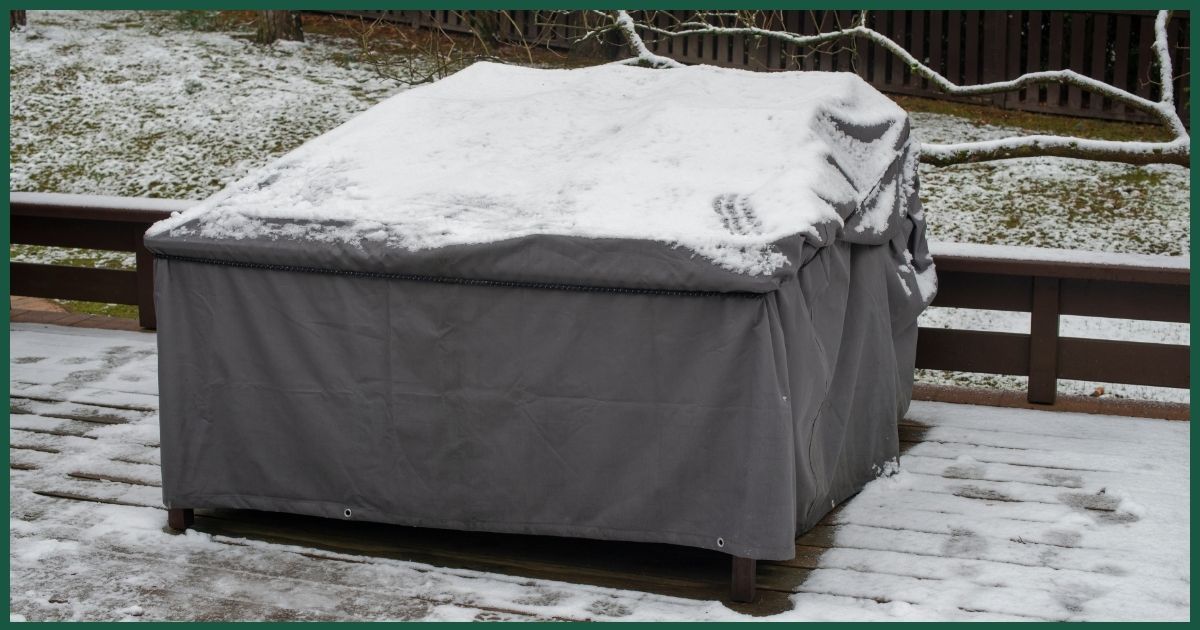
Material Considerations
When choosing patio furniture covers, material is the most crucial factor.
Waterproof and water-resistant fabrics like vinyl and high-quality polyester offer excellent protection against the elements.
Breathable materials are imperative to prevent condensation, which can lead to mould and mildew.
Durable fabric is necessary to withstand wear and tear.
UV protection in the fabric can also be a significant benefit, preventing fading and degradation over time.
Size and Fit Attributes
The right size and fit are imperative for proper coverage.
Measuring your patio furniture to obtain accurate dimensions ensures that the covers fit snugly without being overly tight or too loose.
A correct fit helps protect against wind lofting and keeps the cover in place.
Look for options with elastic hems, tie-downs, or ties to secure the cover to your furniture.
Features of Quality Covers
Quality covers come equipped with various features to enhance their functionality:
- Vents: These allow for breathability, reducing condensation and wind lofting.
- Tie-downs: Seams should be sturdy, with tie-downs to secure the cover during harsh weather.
- Weather-resistant covers have additional protective layers to combat climate conditions.
Covering Techniques and Best Practices
Selecting the right covers and employing best practices in covering patio furniture extends their lifespan and maintains their appearance.
This involves using suitable materials for different weather conditions and ensuring a proper fit to prevent sun damage and moisture build-up.
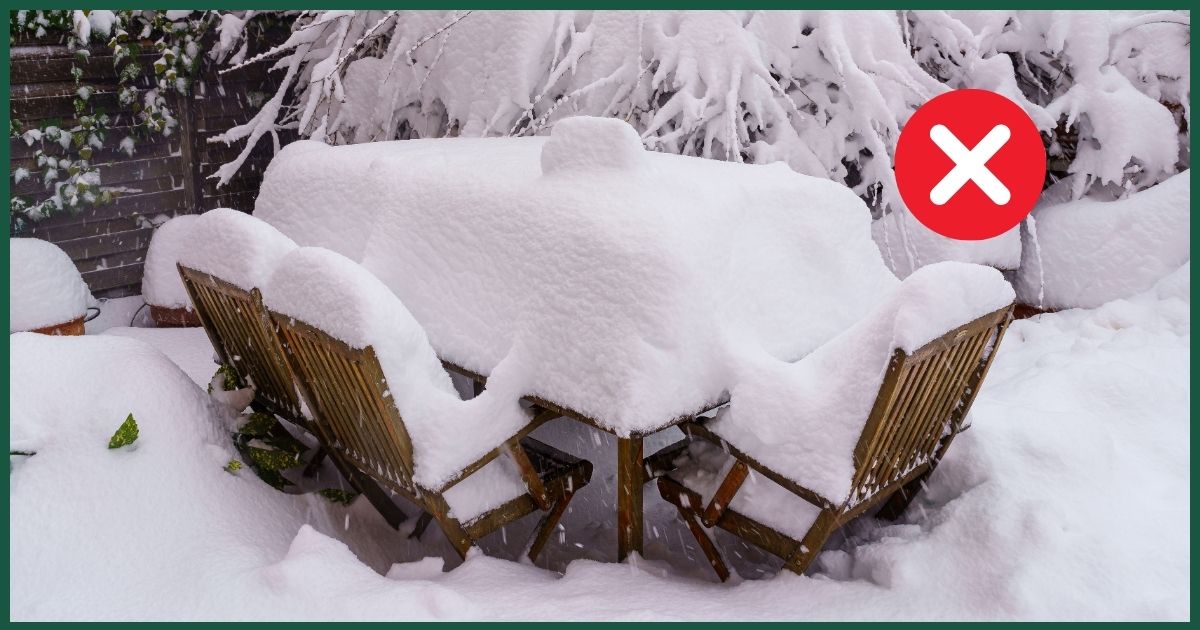
Proper Ways to Cover Furniture
Patio furniture covers should be custom-fitted to ensure they fully protect the furniture from various elements.
Weather conditions play a crucial role in determining the appropriate type of cover:
- For sunny climates, covers with UV protection prevent sun damage.
- In wet areas, waterproof or water-resistant covers are essential to protect against moisture and mold.
To secure covers in place, especially during windy conditions, ties or Velcro straps should be used.
Additionally, covers should be designed with breathability in mind to prevent condensation, which can cause mildew.
Size and Fit
- Correct size and fit are key; too small, and the cover will not adequately protect, too large, and it may gather water or blow away.
- A tight-fitting cover is crucial for protection but should not be overly constrictive to the furniture.
Maintenance and Cleaning Tips
Regular maintenance and cleaning of patio furniture covers are imperative for them to perform at their best.
They should be easy to clean, which typically involves:
- Removing debris and dust before it accumulates to avoid stains.
- Cleaning with mild soap and water, avoiding harsh chemicals that could damage the material.
Cushions should be covered or stored separately to ensure they remain dry and free of mould or mildew. Garden storage boxes or sheds are a great addition to any garden, giving you ample storage for your furniture cushions.
Cleaning Schedule
- Establish a routine cleaning schedule based on the level of exposure to ensure the longevity of the covers.
- Inspecting covers seasonally for damage and cleanliness will help in identifying when they need maintenance or replacement.
Caring for Different Furniture Materials
Proper maintenance of patio furniture depends on the type of materials they are made from, as each requires different care to prevent damage and prolong their life.
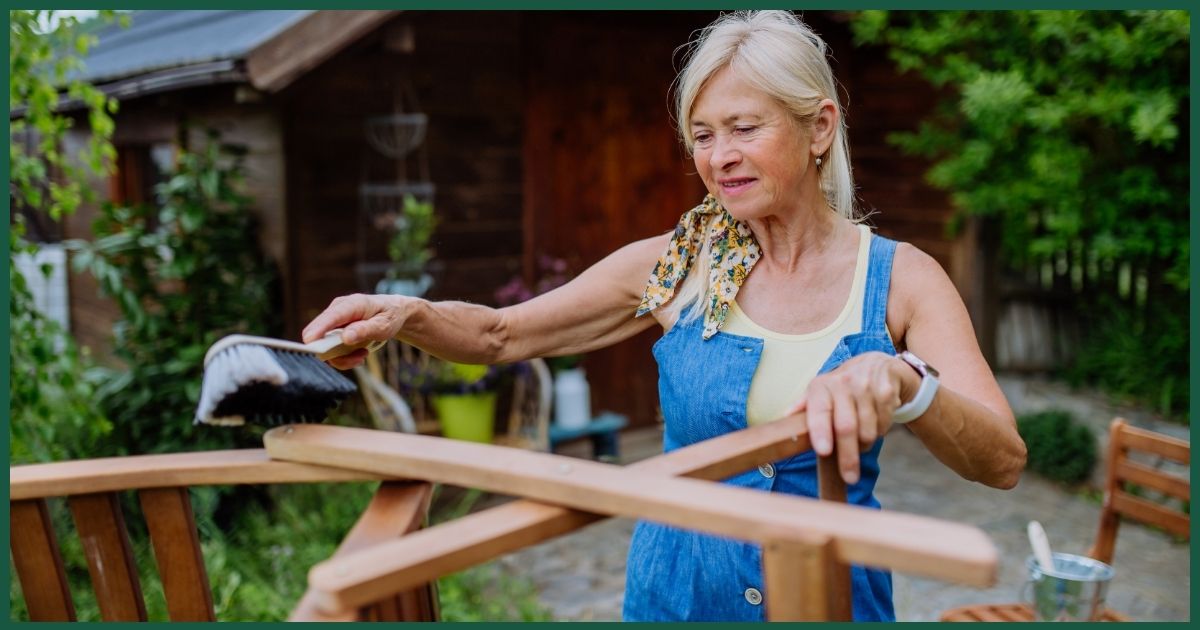
Wooden Furniture Maintenance
Wooden furniture is prized for its aesthetic appeal and natural durability. However, exposure to moisture and sunlight can cause wood to splinter, fade, and develop mould.
Regular treatment with a wood preservative is recommended, as well as the application of a sealant to protect against water damage.
Furniture made from teak or eucalyptus is particularly resilient in outdoor conditions, though they still benefit from occasional oiling to maintain their lustre.
|
Wood Type |
Maintenance Required |
Durability in Climate |
|
Teak |
Periodic oiling; sealant application |
Highly durable; naturally weather-resistant |
|
Eucalyptus |
Regular wood preservative; possible varnishing |
Durable; slightly less robust than teak |
|
Pine |
Frequent sealing and staining |
Less durable; prone to moisture damage |
Metal and Plastic Furniture Care
Metal and plastic furniture offer excellent durability, but they require different care.
Metal pieces, especially those made of iron or steel, can rust when exposed to moisture. To prevent this, they should be treated with a rust-resistant paint and covered during wet weather.
Aluminium furniture, on the other hand, is rust-proof and can be cleaned with a simple solution of soap and water.
Plastic furniture, while resistant to moisture, can become brittle over time due to sun exposure.
Regular cleaning with a mild detergent and storing it away from direct sunlight will help maintain its condition.
Metal Furniture:
- Apply rust-resistant paint regularly.
- Store in a dry, sheltered location during heavy rain.
Plastic Furniture:
- Clean with mild detergent and water.
- Store away from sunlight to prevent brittleness.
Special Considerations for Wicker
Wicker furniture comes in two varieties: natural wicker and synthetic wicker.
Natural wicker is sensitive to moisture and sun, making it prone to fading and developing mould.
It's vital to keep it dry and out of direct sunlight when not in seasonal use.
Synthetic wicker, however, is more resistant to the elements, retaining its integrity and appearance with minimal maintenance.
Cleaning both types with a soft brush and soapy water can prevent dirt build-up, and cushions should be stored away to avoid moisture absorption.
Natural Wicker:
- Store indoors during rain or excessive heat.
- Clean gently with soapy water; avoid oversaturating.
Synthetic Wicker:
- Stands up well against outdoor conditions.
- Clean with mild soap, water, and a soft brush.
Additional Protection Strategies
Patio furniture is continually exposed to the elements, which can lead to deterioration. The following strategies outline methods for extending furniture longevity through effective protection measures.
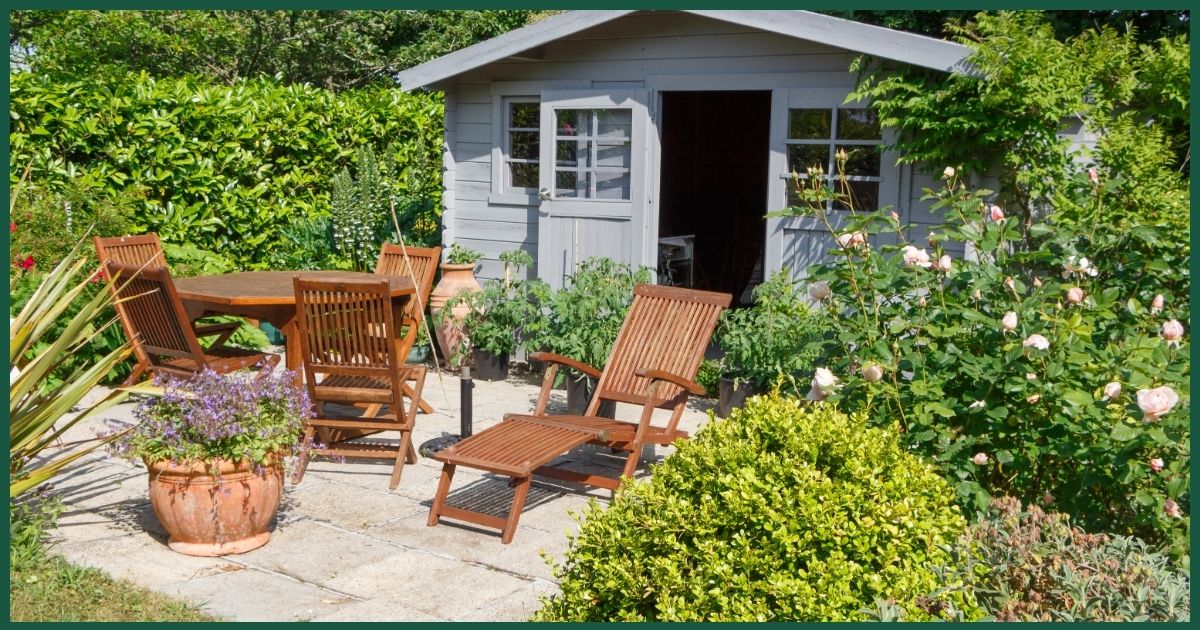
Seasonal Storage Solutions
Climate: Harsh winter conditions demand robust protection for patio furniture. Snow, ice, and extreme cold can weaken structures and materials.
- Winter Storage: In regions with severe winters, storing furniture indoors or in a dry, protected space is crucial. Measure furniture to ensure a proper fit in the storage area.
- Tight Fit Covers: For items that remain outdoors, tailor-fitted covers offer a shield against snow and high winds, preventing damage.
Supplementary Protective Measures
Weather Conditions: Furniture covers must withstand a range of weather conditions, including rainfall and prolonged exposure to sunlight.
- UV Protection: UV-resistant covers are indispensable in preventing sun damage and fading.
- Ventilation Features: Covers should include air vents to reduce moisture buildup and deter mould and mildew.
- Secure Attachments: In areas with high winds, furniture covers need secure straps or weights to remain in place.
Additional Considerations:
- Debris and Bird Droppings: Regular cleaning of covers can protect against the corrosive effects of bird droppings and accumulated debris.
- Pest Deterrence: Covers serve as a barrier to pests, minimising infestation and material degradation.
Maximising Your Budget in Furniture Protection
Investing in protective covers is crucial for prolonging the life of patio furniture. Selecting the right materials and products ensures both durability and cost-effectiveness.
Cost-Effective Covering Options
When considering patio covers, one must assess the balance between price and resilience.
Vinyl covers are a popular choice due to their robust waterproof qualities and moderate pricing.
They provide solid protection against various weather conditions without straining a household budget.
Another valuable option is polyester covers, which are known for their strength and ability to withstand sunlight and moisture.
They often come with a PVC backing for added water resistance.
Although they may present a slightly higher initial cost compared to vinyl, their longevity can prove more economically sound in the long term.
Here is a simplified breakdown of these options:
|
Material |
Benefits |
Approximate Cost |
|
Vinyl |
Water-resistant, cost-efficient, moderate durability |
£20 - £50 (depending on size) |
|
Polyester |
UV-resistant, strong, durable, superior protection |
£30 - £70 (depending on size) |
Buying covers is not merely an expense; it's an investment in furniture preservation.
Users should measure their furniture accurately to ensure a snug fit. This will maximise protection and avoid wasted budget on ill-fitting covers that could fail to protect adequately.
It is essential to consider the climate in one's area when choosing materials.
Those living in wetter climates might prefer the waterproof benefits of vinyl, while sunnier regions could lean towards the UV protection offered by polyester.
Regardless of the choice, protecting patio furniture with covers saves money in the long run by preventing damage and reducing the frequency of replacements.




